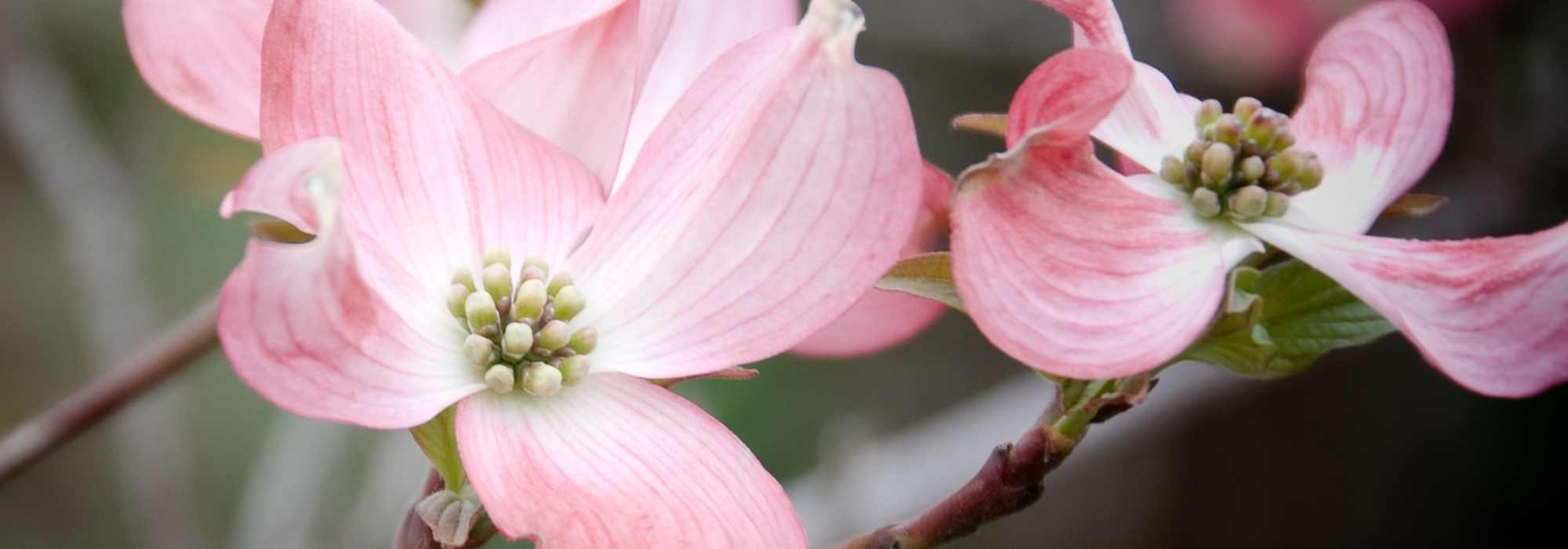
Cornus florida - American flowering dogwood: choosing, planting and caring for
Contents
The *Cornus florida* in a nutshell
- The Cornus florida is a delightful small tree to plant as a standalone or in groups
- The spring flowering with large white or pink bracts is spectacular
- The foliage of American flowering dogwoods takes on beautiful warm hues in autumn
- These small trees require a humus-bearing, acidic, consistently moist but well-drained soil
- This dogwood is cultivated in partial shade or full sun in an oceanic climate
The word from our expert
The American flowering dogwoods, or Cornus florida, closely resemble the Japanese dogwoods, or Cornus kousa. These are indeed two different species of flowering dogwoods, or rather bract-bearing dogwoods, which share many similarities. Only their natural ranges seem to separate them irremediably: Asia for the kousa and America for the florida. Like the Cornus kousa, these dogwoods are charming small trees, with almost horizontal branches, that flower in spring with white or pink bracts depending on the variety; and whose foliage, sometimes variegated, takes on beautiful warm hues in autumn. The fruiting of the Cornus florida (small, smooth red dogwood berries, arranged in clusters) is, however, very different from that of the Cornus kousa (fleshy drupes resembling a kind of lychee).
Although relatively easy to grow and quite hardy, the Cornus florida is nevertheless more particular than the Cornus kousa about its cultivation needs: it prefers acidic, cool, but well-drained soil, a warm but not scorching environment, and, if possible, no severe spring frosts. But if you provide it with a suitable environment, your dogwood will delight you for many years.
American dogwoods are best planted as standalone specimens, but also in small groups if you have the space. They can be tried in a mixed hedge or to line a long driveway. Finally, some cultivars that are more compact, such as Cornus florida ‘Cherokee Chief’, can be grown in a large pot for a few years.
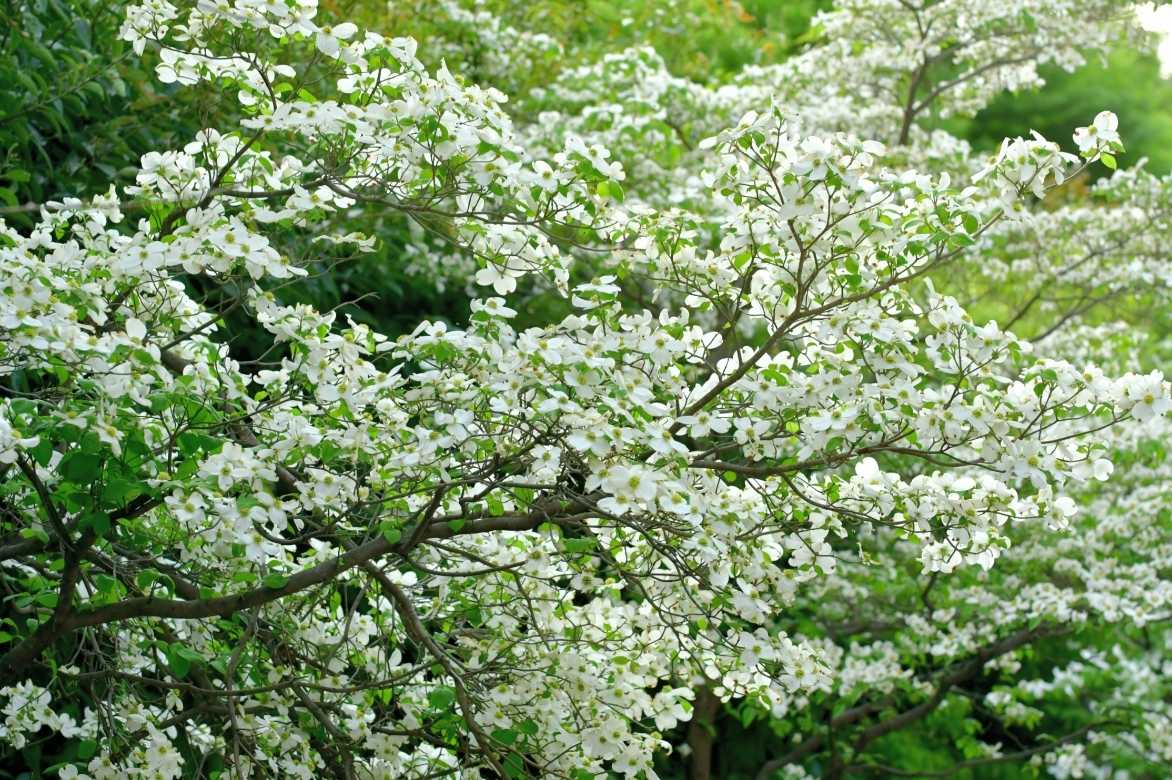
Avalanche of flowers on an aged specimen of Cornus florida
Botany and description
Botanical data
- Latin name Cornus florida
- Family Cornaceae
- Common name Flowering Dogwood
- Flowering April to June
- Height 4 to 8 m
- Exposure partial shade or sun
- Soil type humus-bearing, acidic and fresh, but well-drained
- Hardiness -15°C
The Cornus florida or Flowering Dogwood is a small tree belonging to the Cornaceae family, a family comprising around fifty species of the genus Cornus (Cornus sanguinea, Cornus kousa, Cornus mas…). The Cornus florida is also called Dogwood in its native country. Its range extends along the East Coast and central United States: from Florida up to New York, almost reaching Canada. It grows naturally in woodland understories or forest edges.
♦ Did You Know? The epithet “florida” does not refer to the state of Florida as one might assume given its range. Instead, “florida” in Latin means “floriferous” and refers to its spectacular flowering. While this dogwood does grow in Florida, it is purely coincidental.
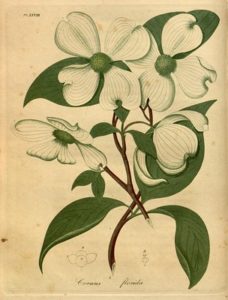
Cornus florida botanical plate circa 1820
Highly hardy, this tree has nonetheless spread worldwide in temperate zones, cultivated as a beautiful ornamental tree for its impressive flowering and fiery autumn foliage.
In the United States, the Cornus florida can reach a height of 12 m. However, in our regions, it will not exceed 8 m in height, often less depending on the cultivar. The crown is spreading to rounded, but the lateral branches grow almost horizontally from the trunk, giving it a very graphic appearance in winter. Young shoots are green but turn red in the sun. As it ages, the bark turns grey and eventually cracks.
The root system is extensive but very shallow. Be cautious of compacted soils, waterlogged surfaces, and especially garden tools around the base of the tree (pickaxe, spade, tiller, or even lawnmower).
The foliage is opposite and deciduous. Each leaf, oval in shape (6 to 12 cm long) and pointed at the tip, has 5 to 6 lateral veins curving forward. The leaves are deep green, lightening in summer before turning beautiful autumn colours: bright orange for the species type to red or purple for some cultivars. There are variegated varieties, such as Cornus florida ‘Rainbow’ or Cornus florida ‘Firebird’. Leave the fallen leaves at the base: they decompose quickly and help improve the soil.

Typical foliage of the species type, variegated leaves of the ‘Rainbow’ variety, and autumn foliage of Cornus florida
The flowers appear in spring, either just before the foliage emerges or simultaneously. In mild climates, flowering begins as early as April, while north of the Loire, you may have to wait until May. What are commonly mistaken for petals are actually bracts, arranged in an involucre. There are four of these bracts, 5 to 10 cm long, white or varying shades of pink depending on the cultivar. These bracts attract pollinating insects, as dogwoods are entomophilous: they rely on insects to fertilise the flowers and produce fruit.
The true flowers are located at the centre of the bracts. In reality, it is a cluster of tiny flowers grouped into a glomerule. Each flower consists of four small petals surrounding four stamens with double anthers arranged in a staggered pattern. This glomerule is small and acid green, turning yellow.

Cornus florida ‘Rubra’, Cornus florida subsp. urbiniana, and Cornus florida ‘Cherokee Chief’
Please note that flowering dogwoods in general take over ten years, sometimes 20 years, to flower if grown from seed. Opt for grafted specimens instead, as they will flower soon after planting!
Did You Know? Cornus florida trees are very prone, especially when young, to alternate bearing: one year, you may have almost no flowering, and the next, enjoy an incredible cascade of flowers.
Autumn fruiting follows flowering. These are glossy, reddish drupes (very rarely yellow) at maturity, clustered in small groups. These fruits, 1 cm in diameter, are particularly decorative and remain on the tree from late summer until winter unless wind or birds intervene. Each fruit contains one or two seeds that can be dispersed by birds or small mammals (zoochory). Note that seeds may germinate after just two winters.
Please note: do not consume the fruits (“dogberries”) of these dogwoods! They are not truly edible, unlike the fruits of the Cornelian Cherry and the Japanese Cornelian Cherry. The fruits of American dogwoods are considered, depending on sources: bland to toxic. In short: forget them!
Read also
5 ideas for pairing flowering dogwoodMain varieties
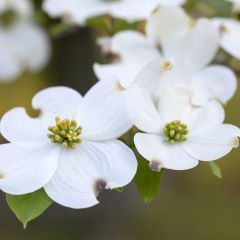
Flowering Dogwood - Cornus florida
- Flowering time June, July
- Height at maturity 6 m

Cornus florida Rubra - Flowering Dogwood
- Flowering time June, July
- Height at maturity 6 m
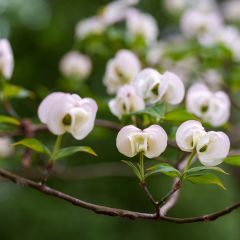
Cornus florida Cloud Nine - Flowering Dogwood
- Flowering time June, July
- Height at maturity 4,50 m

Cornus nuttalii Eddies White Wonder - Flowering Dogwood
- Flowering time June, July
- Height at maturity 6 m
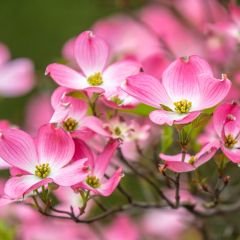
Cornus florida Cherokee Chief - Flowering Dogwood
- Flowering time May to July
- Height at maturity 3 m
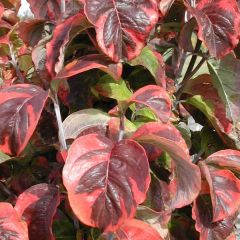
Cornus florida Rainbow - Flowering Dogwood
- Flowering time June, July
- Height at maturity 4,50 m

Cornus florida Firebird - Flowering Dogwood
- Flowering time June, July
- Height at maturity 3,50 m
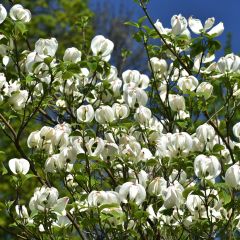
Cornus florida subsp. urbiniana - Flowering Dogwood
- Flowering time June, July
- Height at maturity 7 m
Discover other Cornus
View all →Available in 0 sizes
Available in 0 sizes
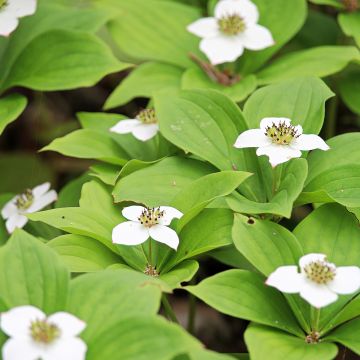
Available in 2 sizes
Available in 1 sizes
Available in 2 sizes
Available in 2 sizes
Available in 1 sizes
Available in 3 sizes
Available in 2 sizes
Available in 3 sizes
Planting the American Flowering Dogwood
Where to Plant?
Cornus florida thrives in slightly acidic, humus-bearing, fresh, but well-drained soils.
Regarding exposure, Cornus florida prefers partial shade.
Plant it under the canopy of tall trees, but ensure the foliage is not too dense, as this could harm flowering. This way, their leaves are protected from the scorching and drying rays of the afternoon sun, as well as spring frosts that could damage the foliage and future flowering.
However, Cornus florida can grow in full sun in oceanic and temperate climates, where it will maintain a beautiful shape and generous flowering.
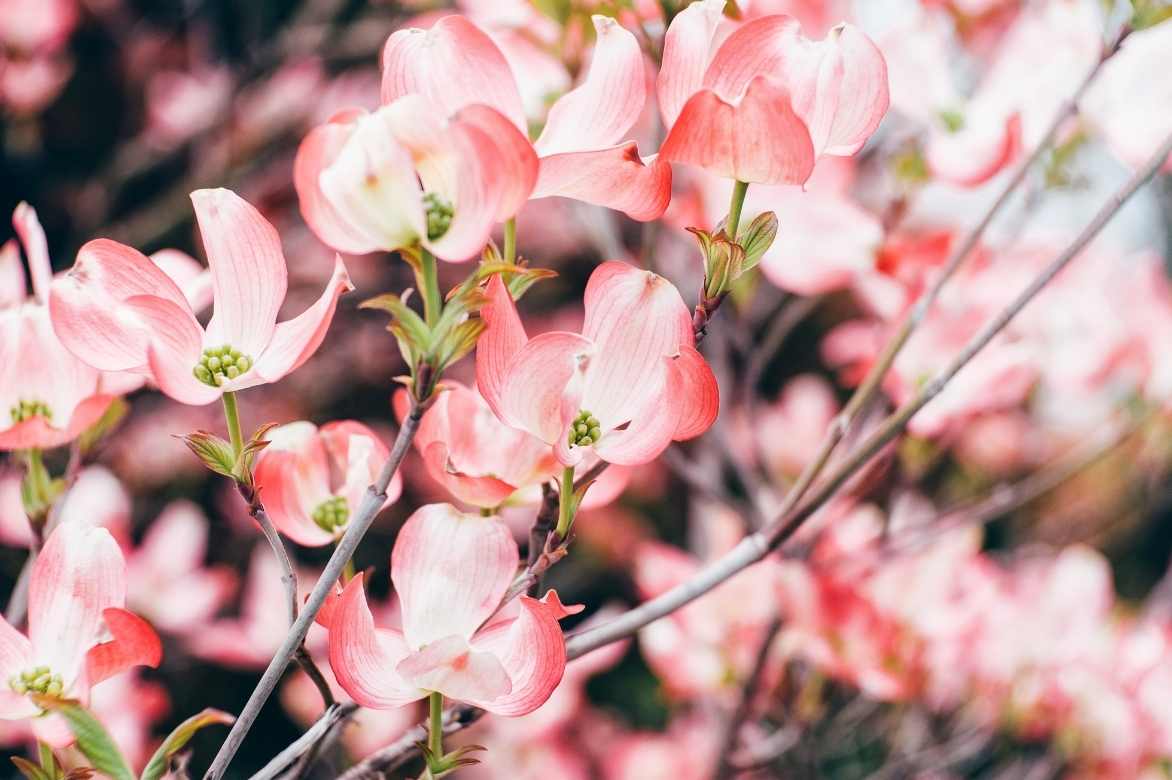
The beauty of spring flowering makes Cornus florida an emblematic bush of the season.
Container Cultivation
It is possible to temporarily cultivate (for no more than 2 or 3 years) small-sized Cornus florida, such as Cornus florida ‘Cherokee Chief’, in very large pots: minimum 60 cm in diameter. Be careful, the substrate must remain fresh, neither too wet nor too dry.
For this, prepare a mix: 1/3 garden soil, 1/3 compost, and 1/3 pumice, turf, or clay pebbles for drainage. Regularly check that the soil in the pot is not dry. Place the pot in a spot sheltered from cold or drying winds.
After these few years in a pot, it will be best to plant your dogwood in the ground to allow it to thrive.
When to Plant?
Plant flowering dogwoods in autumn (October to November) or spring (March to May). By planting in October, the Cornus have time to establish well before winter. This makes for easier recovery the following spring, and they will require less care. They will also be more resistant to drought. However, in colder regions, prefer planting in spring once the risk of heavy frost has passed.
How to Plant?
To plant a Cornus florida:
- Loosen the soil and dig a hole two to three times the width and depth of the root ball, so the roots can develop well;
- Add a good amount of leaf mould and compost to the excavated soil. You can mix gravel into the soil to improve drainage if needed;
- Soak the root ball of your dogwood (with its pot) in a bucket or basin filled with water. When you no longer see bubbles rising to the surface, the root ball is well hydrated;
- Place your dogwood in the centre of the hole, ensuring the collar remains at ground level;
- Backfill the soil around the root ball and lightly firm it with your hands;
- Water generously to avoid air pockets between the roots and the soil. Mulch with dead leaves or a 10 cm layer of mulch to maintain moisture at the base;
- Water regularly during the first year, about one watering can per week in summer, preferably in the evening.
Maintenance
Watering
The soil should neither be dry in summer nor waterlogged in winter! American dogwoods are sensitive to water stress. We recommend maintaining a mulch at the base of your tree to retain moisture and also to protect the roots from the cold in winter.
Water regularly during the first year, about one watering can per week. After that, watering is unnecessary except in cases of drought.
Pruning
No pruning is necessary. Cleaning is limited to removing dead branches in March. You may also remove any crossing or poorly placed branches.
However: avoid pruning Cornus florida as they are highly susceptible to anthracnose. Fungi take advantage of wounds to enter. Also, be careful not to mow too close to the lower branches!
Mulching
Keeping an organic mulch at the base of the dogwood helps retain moisture, but as it decomposes, it also improves soil quality and prevents compaction. You can use straw, wood chips, or dead leaves. If the tree is already large: simply leave its fallen leaves at its base in autumn!
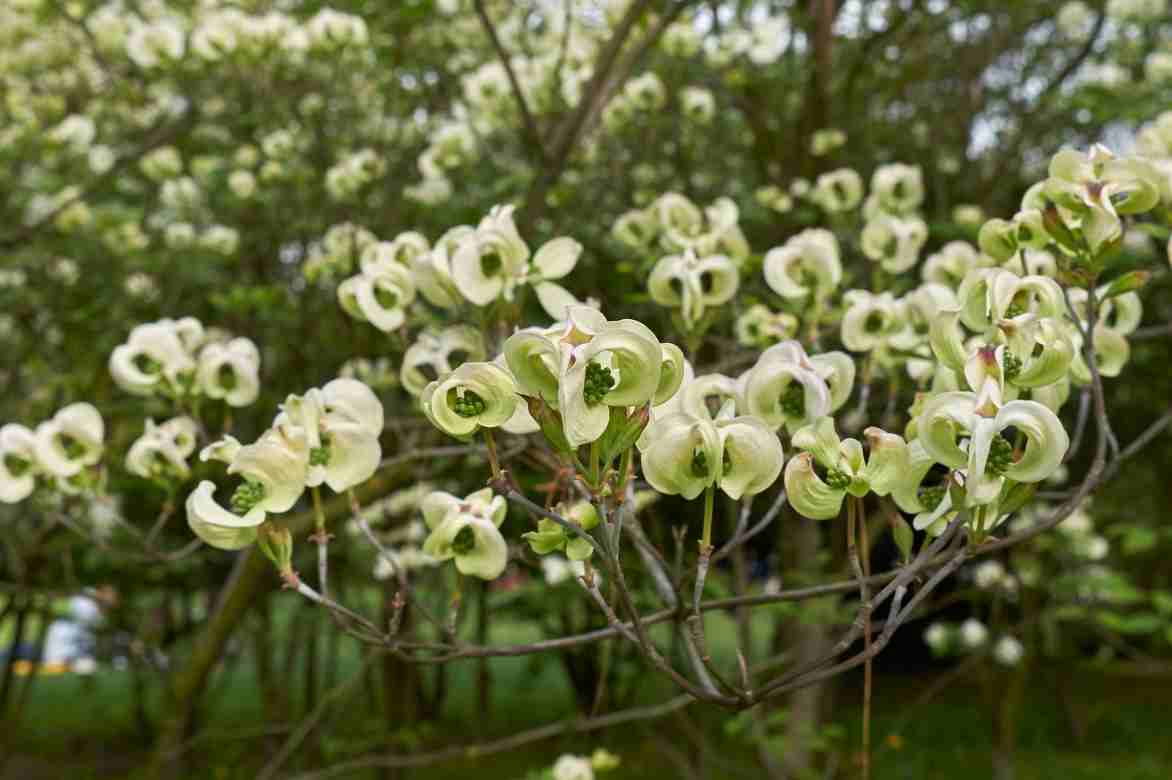
The not yet fully opened bracts are absolutely graceful…
Diseases and Pests
The American flowering dogwoods can be affected by anthracnose (or black spot disease), a fungal disease caused by fungi. Anthracnose manifests as brownish spots edged with purple and necrosis on the leaves and twigs.
These fungi take advantage of wounds to enter. That’s why it’s better to avoid pruning these dogwoods. Do not water the foliage and burn the leaves showing signs of anthracnose, including those that have fallen to the ground. Fortunately, there are now cultivars that are much less susceptible to this disease, such as ‘Sunset’, ‘Cherokee Princess’, or ‘Springtime’.
Powdery mildew (white disease) can also affect dogwoods. A white coating appears on the leaves, which then deform and dry out. This disease can occur when it’s humid and there are significant temperature differences between day and night. Good air circulation between plants helps protect against this fungus.
Multiplication
By Sowing
Sowing is possible but… very slow. Sometimes it takes up to twenty years before you can enjoy the first flowers. But if you’re patient, simply collect the seeds from ripe fruits in October-November, soak them for 24 hours, and then sow them in pots with a well-draining substrate. Leave the pots in a cold frame and only move them out the following spring. Place your pots in partial shade and keep the substrate moist but not waterlogged. Transplant your young plants individually once they have four leaves, then plant them in the ground the following autumn.
By Propagation by Cuttings
Propagation by cuttings from stems works, but the success rate is rarely higher than 50%.
In September, select sections of semi-hardwood stems (beginning to lignify) about ten centimetres long. Remove the leaves and secondary shoots, but keep the last two leaves at the tip of the cutting. Place your cuttings in a light, well-draining substrate (such as sowing compost) and keep them covered. After three months, you can transplant the cuttings individually into small pots and place them in a cold, bright frame (such as a conservatory). The key is to ensure the temperature does not drop below 10°C. Keep the substrate moist but not waterlogged throughout the growing period. You can plant your successful cuttings in the autumn of the following year.
By Grafting
Grafting is the only way to propagate hybrids and certain varieties of Cornus florida. Shield grafting in July-August works best. The rootstock should be a one-year-old seedling of the species type Cornus florida. Although ultimately simpler to perform than it seems, grafting is generally reserved for professionals.
→ Learn more about propagating dogwoods in our tutorial!
How to pair your Cornus florida effectively?
Flowering dogwoods are typically planted as standalone specimens. However, you can incorporate a Cornus florida into a woodland setting alongside other trees and bushes with striking autumn foliage or whose flowering coincides with that of the American dogwood.
A Cornus florida ‘Rainbow’, with its variegated foliage turning deep purple-red in autumn, would pair beautifully with an Acer ginnala ‘Bailey Compact’, whose leaves take on stunning shades of yellow, orange, and scarlet in autumn. Hailing from North America, a Fothergilla major, with its autumn foliage of red, orange, and yellow, would feel right at home beside an American flowering dogwood. If your winters aren’t too harsh (below -12°C), you might consider this intriguing bush from the Euphorbia family: the Sapium japonicum, whose foliage transitions from green to scarlet in autumn.
Don’t hesitate to plant your American flowering dogwood alongside other spring-flowering bushes. If you opt for a Cornus florida ‘Rubra’ with pink flowers, it’s best to stick to similar tones. The well-known yet ever-stunning Prunus incisa ‘Kojo-No-Mai’ will be covered in slightly pink-tinged white flowers between March and May. While magnolias are often feared in small gardens, there are compact varieties, such as the Magnolia denidata ‘Iolanthe’. From a young age, it produces very large flowers (25 to 35 cm in diameter) in April and May, with lilac-pink cups and a lighter centre. Finally, a charming Viburnum plicatum ‘Molly Schroeder’ stands out with its long-lasting pink spring flowering.
Beneath a Cornus florida, you can also cover the base with various shade or partial-shade ground-covering perennials: ferns, hostas, epimediums, Brunneras, Bergenias…
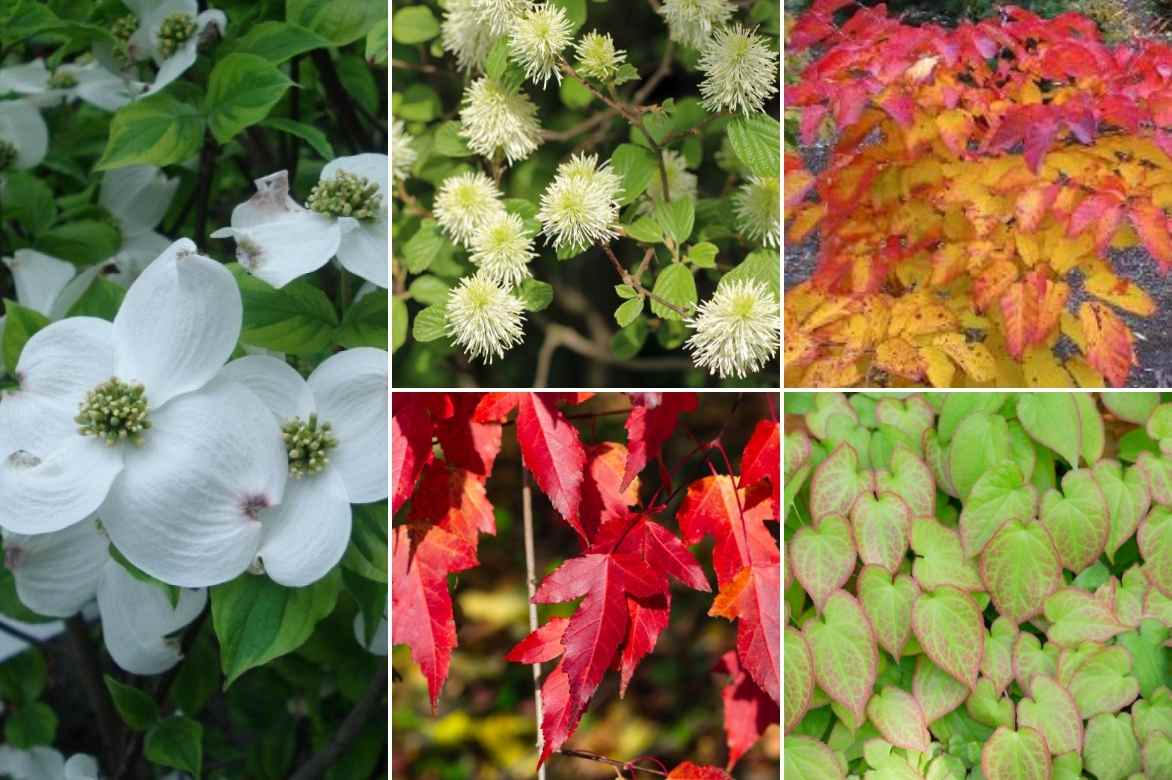
Cornus florida ‘Rainbow’, Fothergilla major in spring bloom, Sapium japonicum and Acer ginnola in their autumn attire, and Epimedium
Also worth reading
- Discover our selection of flowering dogwoods in our online nursery.
- For healthy dogwoods, explore our article: diseases and parasitic issues of Cornus or dogwoods.
- Advice sheet: 10 dogwoods for a small garden
Frequently asked questions
-
My Japanese Dogwood still isn't flowering. What's going on?
It could be several things. Firstly, the flowering dogwoods take several years to flower, especially if they are grown from sowing. Secondly, exposure is important. The American flowering dogwoods dislike full sun but appreciate a few hours of sunlight per day (at least four hours). If your tree is planted in too much shade, it will not flower or will flower very little. Finally, an excess of nitrogen can sometimes prevent trees from flowering well. In this case, they produce only wood and foliage. It is also worth noting that a very late frost, around April and May, can completely remove the flower buds of the Cornus florida.
-
The foliage of my <em>Cornus florida</em> is turning an odd colour. What's happening to it?
If it's autumn, everything is fine! Otherwise, your tree is suffering. Brown, drooping leaves indicate either a lack of water or, conversely, root suffocation in overly heavy soil. In the first case, it's easy to resolve—a good watering followed by mulching should help it through this phase. In the second case, you'll need to improve the soil to make it more draining by adding compost on the surface, wood chips, dead leaves, etc., or even relocate the tree. Also, be aware that American Dogwoods dislike dry atmospheres, scorching sun, and drying winds that burn the foliage. Finally, brownish spots ringed with purple are a sign of a fungal disease called anthracnose (see the diseases section).
-
My garden is very small. However, I would love a flowering dogwood. Can I adopt one?
It all depends on the size of the garden, but compact varieties exist: Cornus florida 'Cherokee Chief' and Cornus florida 'Firebird' will not exceed 3 m in any direction.
-
My soil is chalky. Can I try a Cornus florida?
The *Cornus florida* hates limestone! At a push, you could try adding a pine needle mulch to attempt to acidify the soil, but it would be laborious. Forget about *Cornus florida* in limestone soil!
- Subscribe!
- Contents































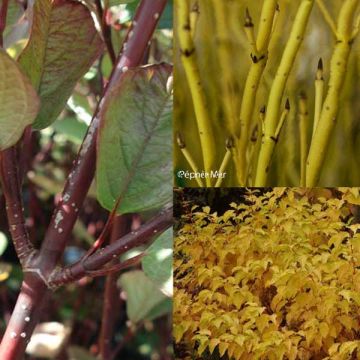


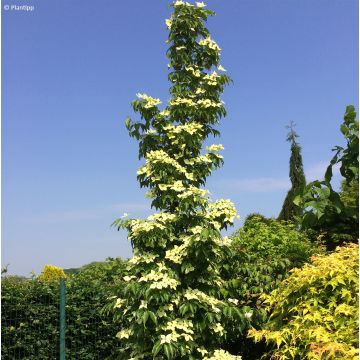


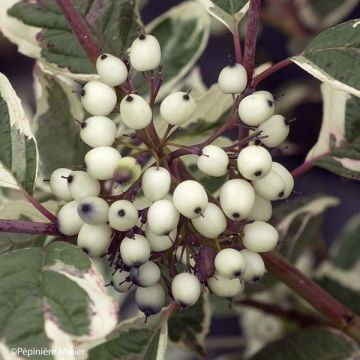

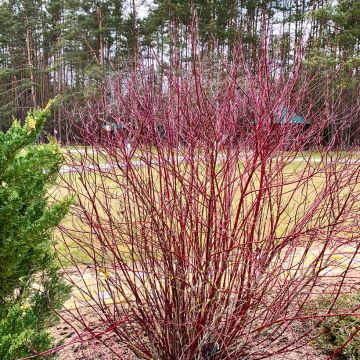
Comments